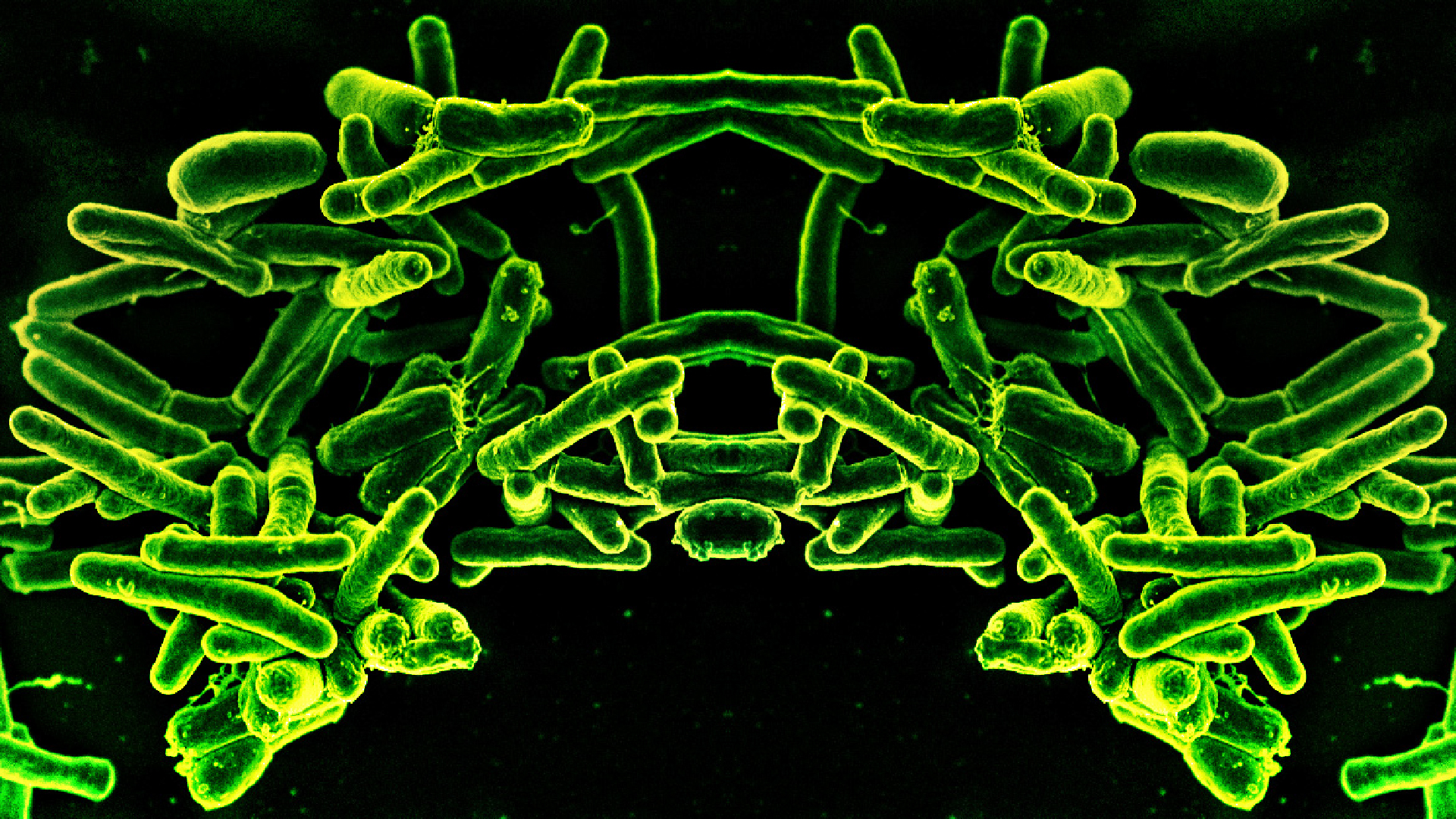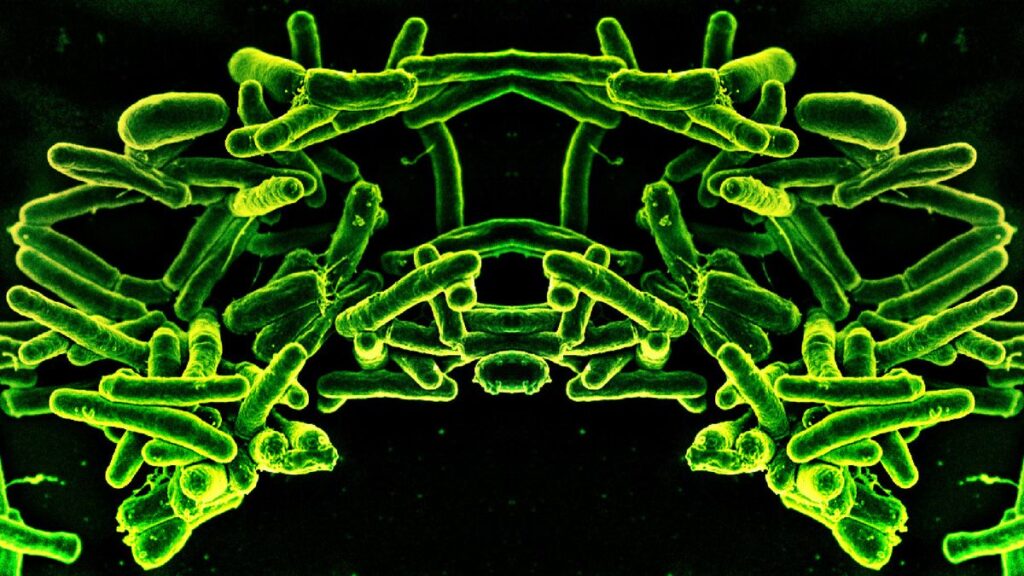
When you look in a mirror, the reflection is fundamentally you, but with a perfect reversal of all your features. This illustrates a phenomenon we also see in the tiny world of molecules.
Some molecules exist as mirror images of themselves, known as “enantiomers”, that can’t be superimposed on one another. This concept is known as chirality, or “handedness”. It’s important because mirror images of the same molecules can have completely different effects and functions in biology.
Writing in the journal Science, a group of 40 renowned scientists have warned that within the next decade, it may be possible to create entire mirror-image life forms made up of these enantiomers — specifically, microbial life such as bacteria. This poses real dangers, they argue.
“Mirror bacteria” could evade people’s immune systems, they suggest, causing deadly infections. Such infections could also lead to a substantial proportion of plant and animal species being displaced, completely disrupting the environment.
Mirror-image molecules are structurally identical, just as your left and right hands are structurally identical and can perform exactly the same functions. These molecules also have exactly the same chemical properties — but for unknown reasons, nature has a preference for building life from just one version of such molecules.
For example, amino acids — the building blocks of proteins — are left-handed, while sugars are right-handed. The DNA molecule is a right-handed screw thread.
This selective chirality defines how molecules interact in living systems. It influences how drugs and enzymes (biological catalysts that speed up reactions) function in our body, as well as how we perceive flavours and smells. For example, the molecule carvone can smell of either spearmint or caraway seeds, depending which “mirror” version of the molecule you get this scent from.
Related: Scientists discover once-in-a-billion-year event — 2 lifeforms merging to create a new cell part
Other mirror molecules have much more profound implications. The drug thalidomide exists in two forms. One is a powerful treatment for morning sickness; the mirror version causes devastating birth defects.
This begs the question: what if we could make biological molecules that exist on the other side of the mirror? The drive behind this research is partly from curiosity, but it also has practical applications.
Medical treatments are increasingly derived from biological molecules such as peptides (small fragments of proteins), which can be used for treating cancer. But despite their effectiveness, natural proteins and peptides face a significant limitation: they degrade quickly in the body.
This is because the enzymes in our bodies, which evolved to break down biological molecules for recycling, are highly efficient at targeting natural peptides. So, these cancer treatments may require frequent dosing to ensure they work.
However, similar peptides built from mirror amino acids probably wouldn’t be recognised by these degradation systems, yet could still be designed to target cancers. And building these mirror biological molecules is already achievable: we’ve made reflections of DNA, fully functional “mirror enzymes”, and more.
The risks of mirror life
The potential benefits of mirror molecules are tantalising. The obvious next step would be to create full mirror organisms, made entirely from molecules that are the reflections of natural versions.
There are already research groups working on building bacteria “from the ground up”. In other words, they are trying to synthesise biological molecules and assemble them into functional cells.
While making mirror bacteria from the ground up is still probably a decade away, there are already real concerns about where this research might lead. The 40 scientists writing in Science fear that mirror life, if it were to escape from labs (and there are plenty of examples of this happening), could have devastating consequences.
The most immediate concern is that mirror bacteria could evade the immune systems of humans, animals and plants. Our immune defenses rely on recognising conserved molecular patterns found in natural pathogens (an organism or other agent — such as a virus — that causes disease), all of which are built from left-handed amino acids. Mirror bacteria would lack these recognisable patterns, rendering our immune systems blind to their presence.
Mirror bacteria could also disrupt ecosystems in unpredictable ways. For example, they would probably be able to evade biological controls such as viral infection and bacterial antibiotics, allowing them to proliferate unchecked.
This could result in invasive populations of mirror bacteria that displace native species, disrupt food webs and alter nutrient cycles, potentially leading to cascading ecological consequences.
The scientists’ warning about mirror life is striking — in part because it appears in such a prestigious academic journal, but also because it is underpinned by a rigorous 300-page technical analysis.
Their stark message, emphasising the extraordinary risks of mirror organisms, might sound like the plot of a sci-fi thriller, but the concerns are grounded in valid scientific reasoning.
Mirror bacteria present a unique and unprecedented challenge. However, this is not a crisis that will unfold tomorrow. The technical barriers to creating full mirror life remain significant, providing the global community with ample time to consider its response. And the scientists also acknowledge that, beyond research driven purely by curiosity, they struggle to conceive of any compelling justification for developing full mirror organisms.
By acting now — through robust governance, careful oversight and international collaboration — we can guide the development of mirror biomolecules responsibly, while ensuring that the creation of full mirror life is prevented — unless its risks are unequivocally understood and mitigated.
This edited article is republished from The Conversation under a Creative Commons license. Read the original article.
